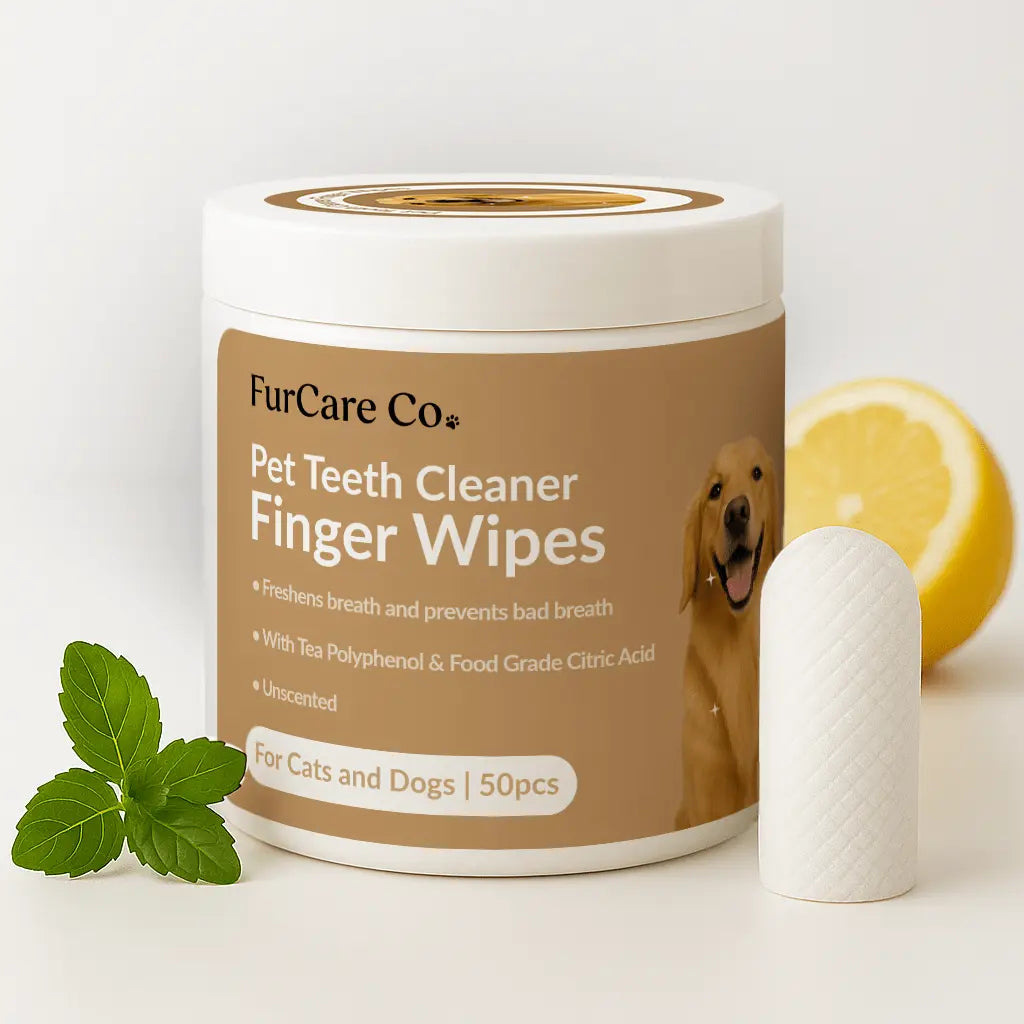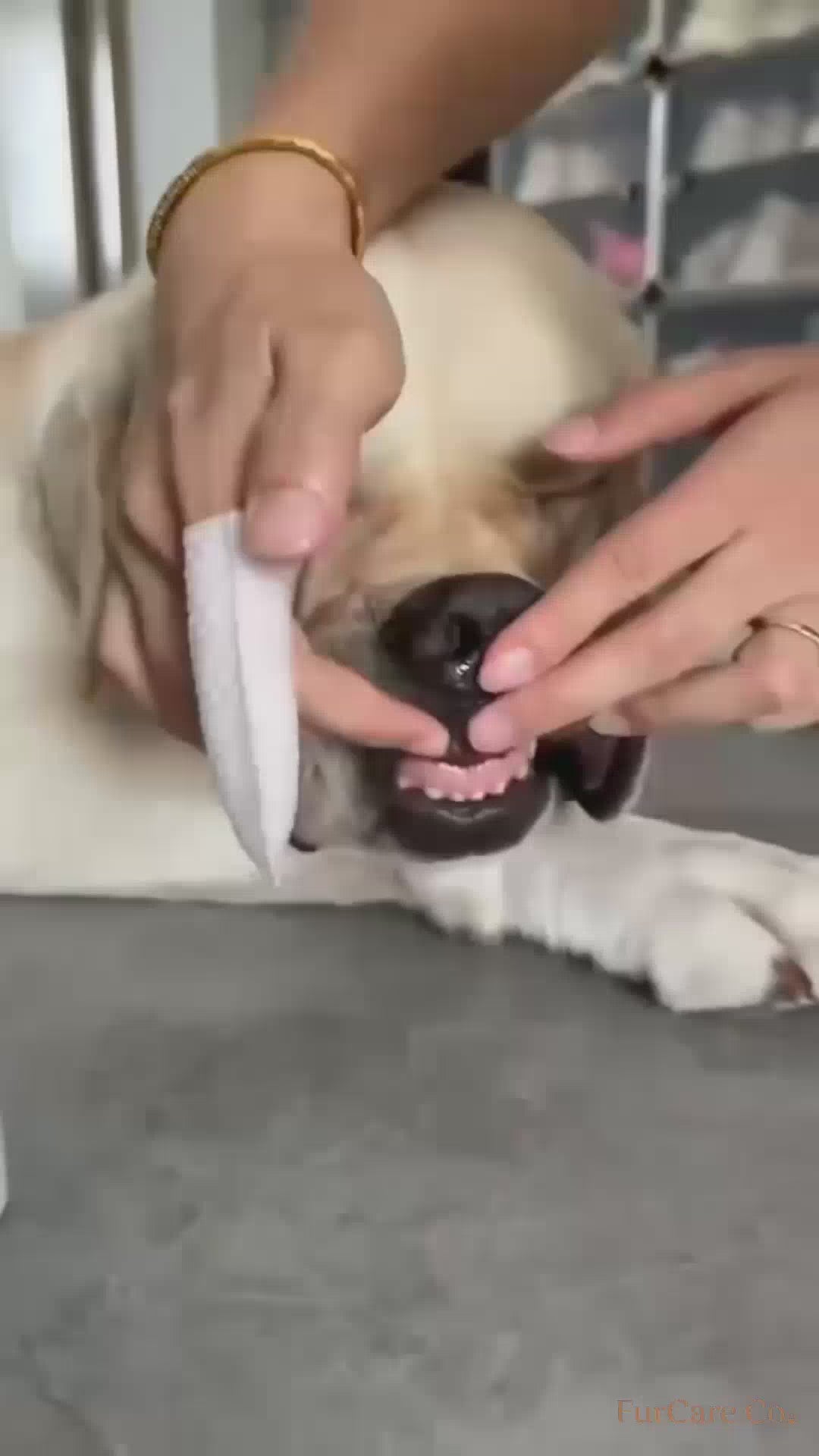Why Most Pet Dental Care Products Don't Work (And What Actually Does)
Share
The uncomfortable truth about the $2.3 billion pet dental industry
Last week, I received an email that broke my heart:
"Jenny, I've spent over $1,200 trying to fix my boy's breath. Professional cleanings, enzymatic chews, water additives, three different toothpastes... his breath is still so bad I have to hold my breath during cuddle time. I'm starting to think nothing works. What am I doing wrong?"
Sarah from Michigan isn't alone. After working with thousands of frustrated pet parents over the past three years, I've discovered something disturbing: most pet dental products are designed to make you feel better about the problem, not actually solve it.
Here's why 90% of what's on the market is essentially expensive wishful thinking – and what the 10% that actually works has in common.
The Dirty Secret the Pet Industry Won't Tell You
I spent 18 months researching veterinary dental science before developing our formula, and one study stopped me cold:
"The most common cause of halitosis in dogs is periodontal disease arising from plaque biofilm formation. This biofilm reforms within 24-48 hours of mechanical removal."
Let me translate: that sticky, invisible film coating your pet's teeth? It's not just plaque. It's a complex bacterial ecosystem called biofilm, and it's the real villain behind your pet's breath problems.
Most products on the market don't even address biofilm formation.
They're treating symptoms while the root cause rebuilds itself every single day.
It's like trying to clean a dirty bathtub by spraying air freshener on it.
Why Your Expensive Professional Cleanings Stop Working So Quickly
Here's what happens during that $800 professional dental cleaning under anesthesia:
- Vet removes visible tartar and plaque (the hard stuff)
- Polishes teeth until they're perfectly clean
- You take your pet home with pristine teeth
- Within 24-48 hours, biofilm starts reforming
- Within weeks, you're back to square one
Don't get me wrong – professional cleanings are important for advanced cases. But they're a one-time fix for an everyday problem.
The harsh truth: If you're not disrupting biofilm formation daily, those expensive cleanings are just buying you temporary relief.
The Great Dental Chew Deception
Walk into any pet store and you'll see walls of dental chews promising "cleaner teeth" and "fresher breath." The global market for these products is worth over $900 million annually.
Here's what the companies don't want you to know:
Hard chews can only scrape surface plaque. They can't penetrate the sticky biofilm matrix that holds the real problem bacteria. It's like trying to remove barnacles from a boat hull with a feather duster.
Worse, many dogs with existing dental problems find constant chewing painful. Remember my research about the pet parent whose dog had an overbite? "Constant chewing gives her discomfort," she wrote. Yet this is the #1 recommendation from most vets.
The uncomfortable reality: For many pets, dental chews are causing more stress than relief.
Why Water Additives and Breath Sprays Are Just Expensive Perfume
I've tested dozens of water additives and breath sprays that promise to "eliminate odor-causing bacteria" and "freshen breath instantly."
They're not lying – they do mask the smell temporarily. But here's the problem:
Masking odor isn't the same as eliminating the source.
That bioweapon breath isn't coming from surface bacteria. It's coming from anaerobic bacteria living deep in the biofilm, producing sulfur compounds that no amount of minty freshener can neutralize.
Using breath spray on advanced dental disease is like putting cologne over dirty gym clothes. The smell might be temporarily better, but the underlying problem keeps getting worse.
The Toothbrush Battle Most Pet Parents Lose
"Just brush their teeth daily," every vet says. "It's the gold standard."
In theory, they're right. Daily mechanical disruption of biofilm is exactly what's needed.
In practice, it's a disaster for most families.
Here's what really happens:
- Week 1: You're motivated and determined
- Week 2: Your dog starts hiding when they see the toothbrush
- Week 3: Wrestling match every night, stress for everyone
- Week 4: You give up and feel guilty
According to the American Veterinary Medical Association, less than 5% of pet parents successfully maintain daily brushing routines.
The brutal truth: The gold standard only works if you can actually stick with it.
The Three Fatal Flaws That Doom Most Products
After analyzing hundreds of products and thousands of customer reviews, I've identified three critical failures that explain why most pet dental care fails:
Fatal Flaw #1: They Don't Address Biofilm
95% of products focus on surface cleaning or odor masking. They're solving yesterday's problem while today's biofilm keeps building the foundation for tomorrow's disaster.
What works: Ingredients that actually break down the biofilm matrix, like natural acids that chelate the minerals biofilm uses to stick to teeth.
Fatal Flaw #2: They're Too Complicated or Stressful
The most scientifically perfect solution is worthless if your pet won't tolerate it or you can't maintain the routine.
What works: Simple, stress-free methods that pets actually enjoy or at least tolerate consistently.
Fatal Flaw #3: They Use Harsh or Unsafe Ingredients
Many "effective" dental products use ingredients that are too harsh for daily use, or worse, potentially harmful if swallowed.
What works: Natural, food-grade ingredients that are safe for daily use even if your pet licks or swallows them.
The Research That Changed Everything
While developing our formula, I came across a fascinating study on tea polyphenols and bacterial biofilm disruption.
Researchers found that certain natural compounds could actually break down the protective matrix that bacteria use to form biofilms – without harsh chemicals or complex procedures.
This was the lightbulb moment: What if we could disrupt biofilm formation using gentle, natural ingredients in a delivery method pets would actually tolerate?
Why Most Pet Parents Keep Buying Products That Don't Work
The pet dental industry has a vested interest in keeping you confused and hopeful.
Confusion sells products. If the solution were simple and obvious, you wouldn't need to keep buying new things to try.
Hope sells products. Every new chew, spray, or additive promises to be "the one" that finally works.
Guilt sells products. "Good pet parents" keep trying, even when nothing works.
Meanwhile, your pet's dental health continues to deteriorate while you cycle through increasingly expensive solutions.
The Uncomfortable Truth About "Natural" Products
Just because something is labeled "natural" doesn't mean it's effective or even safe.
I've seen "natural" dental products containing:
- Essential oils that can be toxic to cats
- Herbs that cause digestive upset in sensitive pets
- "Natural" preservatives that are actually harsh chemicals
- Alcohol-based formulas that dry out oral tissues
Real natural doesn't need scary disclaimers or complex ingredient lists you can't pronounce.
What Actually Works: The Three Non-Negotiables
After three years of research, testing, and working with veterinary professionals, I've identified three requirements for any dental care product that actually works:
1. Daily Biofilm Disruption
Must physically and chemically break down the bacterial matrix that forms within 24-48 hours of cleaning.
2. Pet Acceptance
Must be gentle, stress-free, and tolerable enough for daily use. If your pet fights it, you won't stick with it.
3. Safe Simplicity
Must use ingredients that are safe if swallowed and simple enough to maintain long-term.
Every product that meets all three criteria works. Every product missing one or more fails.
The Real Reason Some Products Work and Others Don't
It's not about marketing budgets or fancy packaging. It's about understanding that pet dental health is a daily maintenance issue, not a one-time fix problem.
The products that work treat it like brushing your own teeth – simple, gentle, daily habit that prevents problems rather than trying to cure advanced disease.
The products that fail treat it like a magic bullet – expecting dramatic results from sporadic use of harsh interventions.
What This Means for Your Pet Right Now
If you're reading this because your pet's breath has become unbearable, here's what you need to know:
Stop looking for the magic solution. There isn't one. There's only consistent, gentle, daily biofilm disruption using safe, effective methods.
Start focusing on what your pet will actually tolerate. The best solution is the one you'll actually use every day for months and years.
Address the real problem, not the symptoms. Bad breath is just the warning sign. The real enemy is the biofilm reformation happening every 24-48 hours.
Most importantly, don't give up. The right approach really does work – you just have to stop trying approaches that were doomed from the start.
The Simple Truth
Your pet's dental health doesn't have to be complicated, expensive, or stressful. But it does have to be consistent.
The solution isn't found in the next product you try – it's found in understanding what actually causes the problem and addressing it daily with something gentle enough to maintain long-term.
Those precious bonding moments – the face nuzzles, the cuddle sessions, the sweet morning kisses – they're worth 30 seconds a day of the right kind of care.
Your pet deserves a solution that actually works. And you deserve to stop wasting money on products designed to fail.
Want to learn more about the specific science behind biofilm disruption and natural dental care?
Check out our article for peer-reviewed studies and detailed explanations of what actually works – and why.
Jenny Martinez is the founder of FurCare Co and has spent over three years researching effective, natural solutions for pet dental care. She holds a degree in Animal Science and works with veterinary professionals to develop products that address the root causes of pet dental problems.


